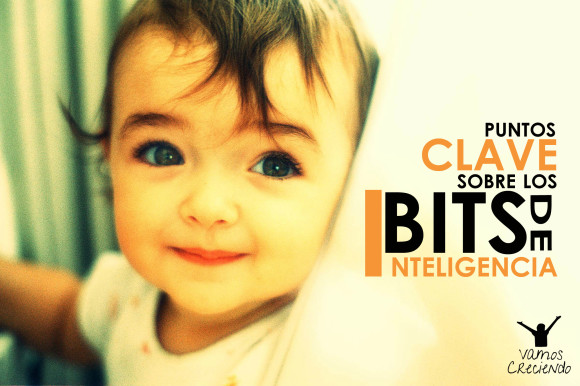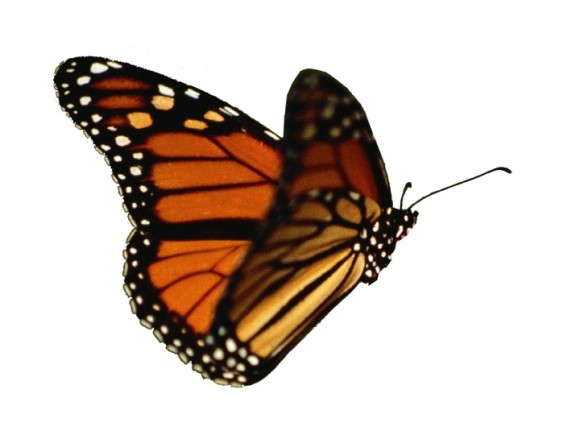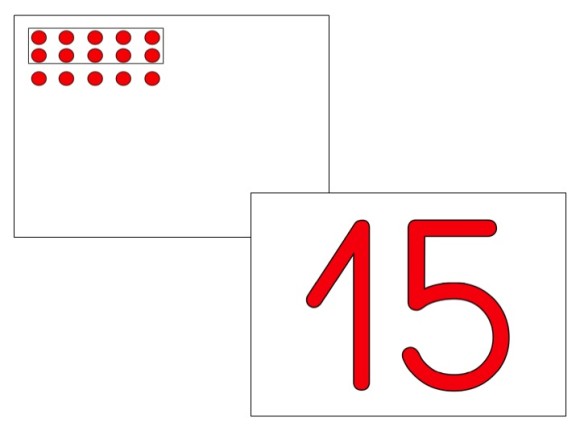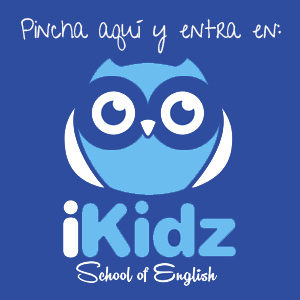As many of you know, the past 30 of March, I had the privilege to participate as a speaker in the I Congress of Educating Learning Childhood Education, you can see the video Youtube, or if you prefer, check presentation Slideshare. One of the topics, for matter of time, I could not try was the theme of the bits of intelligence. While I talked about some games you can make with bits, You can see them in detail in the post, "The game. Key learning of the smaller ", we did not see how to make them and how they should go to the kids to really be effective and efficient, so I wanted to dedicate this post to this topic.
The theme of the bits of intelligence is a controversial topic that every teacher has spoken at some point in their career. Some assert categorically the effectiveness of this method, while others say it is not as effective as outlined.
En este post, My goal is that all know what are the bits of intelligence and you are capable of making them yourself. Further, I want to tell you first hand as has been my experience using them in the English classroom.
The intelligence bits name is given by the American physiotherapist Glenn Doman, He defined as the: units of information that children are presented in an appropriate manner. Its specific embodiment is the use of a very precise picture or drawing or a photograph of good quality together with an auditory stimulus, that is to enunciate aloud representing.
Therefore, one could say BIT It is a simple fact that can store and reach the brain through the senses. The bits of intelligence are units of information that are presented to children in a brief form, with what it manages to capture your attention.
What are the benefits of this method?
- They help improve attention and concentration of children in the tasks.
- They help develop and stimulate the brain, memory and learning.
- Contribute to visual and auditory development of children.
- Learning vocabulary.
There are many bits, according to the categories in which we want to divide, but the most common are:
- Bits enciclopédicos.
We refer to bits that show images. These images are usually divided into categories so that children will be presented grouped.
These are the kind of bits that I use in my classroom, usually I put the spelling of the word below the image for the kids to become familiar with it, but most of all, the importance of these bits is that the images be clear and do not result in an error, then we will see this in more detail. Further, when I refer to introduce children categories, I refer to the fact, one days introduce children to animals, other plants, The parts of the house, etc. What is usually done is usually present during the meeting that vocabulary work for unity.
- Reading Bits.
In these shows only the word, no image associated with that word.
Usually it uses red because it causes greater visual impact. Many times what we usually do is, on one side of the cardboard or foil, put the picture and on the other the word.
With younger children, up to three years, the capitalization is more common, while, after three years you begin to use the tiny, letter that learn to read. Typography which is usually used for these bits is linked letter or Massallera.
- Bit math.
Are the bits that we use to work the numbers, the amount and associate numbers with number.
From my point of view, These bits are fine for children to learn the spelling of numbers, but to learn to really associate the number with the number, the best way is games that the kids have to manipulate the elements, count, etc.
How can we make our own intelligence bits?
To manufacture our own bits, we must consider the following characteristics required if we are to be effective.
– Select a drawing or photograph. If possible best photographs that represent the item you want to learn a real and always with a white background that does not distract the child.
– This drawing or photograph must be:
- Accurate. As accurate as possible.
- Concrete. It must contain a single element without small details.
- Easily recognizable and clear.
- Big. The image should fill most of the page.
- Novel.
– Sometimes, may accompanied by the written word.
If we are to print the bits, we must ensure that they are in a rigid support, if possible white cardboard, it is recommended that its measures are 28×28 cm but obviously I adapt the foil A4. A good way to last us and also can use them to play is plasticize, thus we not have to be constantly making new bits.
Once our bits have intelligence, the important thing is that when you move on to the baby or child, accompany the display name for the item that appears on the card, in this case in English.
When I pass my students the bits I do by category, logically, as I mentioned before, it is normal to go to work on vocabulary related to the topic or teaching unit we are currently working on, if we are working family, bits spend with family members, home, the animals, etc. a good time is early in the morning, when children are attentive and clear, during the assembly, for example.
According to Doman, the best time to implement this method, when the child is no more than six years old. Should repeat the presentation of the same ten cards three times a day (sessions spaced apart), for five days in a row, or stop sooner if we see that the child tires.
I personally do not use them well, I spend one or two categories in the assemblies in the morning for about ten minutes, logically reducing if I see that children begin to tire. Every three weeks or a month, Change category, Also depending on the timing.
As you can see making your own bits it is a snap. Once you may have, in addition to use for your child or student to learn new vocabulary you can play with them and perform many activities.
As usual, thanks for your time.
Kisses to all,
Cristina
“The oral teachings must adjust to the habits of listeners”
Aristotle
Tags: Learning at an early age, Learning English, Significant learning, bits, bits intelligence, Glenn Doman, intelligence, Método Doman







 Español
Español English
English Français
Français Deutsch
Deutsch 中文(简体)
中文(简体) Português
Português

Hello, I'm Denisse, I wonder how much is right for the red dots of the method for mathematics…
Hello Denisse,
I could not tell an accurate measure. I think the key is to look good and have adequate separation between them so that the kids identify them clearly.
I would say that 1 cm diameter is more than enough.
A hug,
Cristina